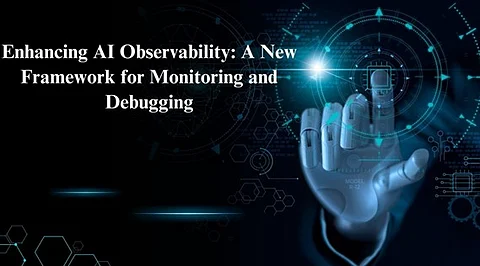

Increasing complexity: AI systems are becoming more complex, and so the need for monitoring and maintenance mechanisms to ensure efficiency, reliability, and security has matured with that or even surpassed it. Expert in cloud computing with AI observability, Mouna Reddy Mekala, introduces a fresh framework to improve real-time monitoring of AI-driven pipelines and debugging. The work makes a case for the transforming problems in observability of AI systems and provides innovative solutions that will optimize the performance of the systems.
Application Explosion: So far, applications of AI have opened up an entirely new set of issues in monitoring distributed systems. Traditional observability instruments are often insufficient to handle the special characteristics inherent in AI pipelines that churn out massive amounts of data and require extremely fine monitoring techniques. Up to 76%, the research shows, of organizations find their undertaking in monitoring their AI pipelines. Data quality problems account for 67% of failures in pipelines. These necessitate an advanced observability framework designed explicitly for AI innovative environments.
The proposed framework introduces a multi-layered approach to AI observability, incorporating data collection, processing and analysis, and visualization. This architecture provides organizations with deep insights into their AI operations, enabling them to proactively detect and resolve system anomalies. Unlike conventional methods that treat AI workflows similarly to traditional data processes, this framework is designed to handle vast amounts of data—up to 2.5 quintillion bytes per day—across interconnected systems.
One of the key innovations in this framework is its ability to provide real-time distributed monitoring while maintaining system integrity. It processes over one million telemetry data points per second, with a sub-100ms latency for metric collection. By integrating adaptive anomaly detection mechanisms, the framework achieves a 99.7% accuracy rate in identifying system irregularities, reducing false positives by 85%. Furthermore, it enhances incident response, decreasing the mean time to resolution (MTTR) from 3.5 hours to 1.1 hours, thereby significantly improving operational efficiency.
The framework’s data collection layer is equipped with cutting-edge tracking mechanisms that facilitate comprehensive system visibility. Using OpenTelemetry for distributed tracing, the system effectively manages 175,000 concurrent traces with a 99.997% completion rate. Additionally, Prometheus-based metrics collection handles 750,000 data points per second, ensuring precise monitoring with a response time of just 8ms. These advanced data collection techniques reduce storage overhead by 72% while preserving critical system insights.
The processing layer incorporates real-time stream processing to handle over 4.2 million events per second. Through AI-enhanced correlation mechanisms, it reduces alert noise by 93% and improves anomaly detection accuracy to 97.2%. By integrating machine learning models, the framework dynamically adjusts anomaly thresholds, minimizing false positives and improving detection accuracy during peak loads.
Effective visualization is a critical component of AI observability. The framework provides real-time dashboards with a refresh rate of 750ms, allowing organizations to monitor key performance indicators effortlessly. Its root cause analysis engine identifies system issues within 60 seconds of detection, significantly enhancing troubleshooting efficiency. By maintaining historical performance data for 24 months, organizations can conduct in-depth trend analysis and optimize their AI models accordingly.
The observability framework seamlessly integrates with cloud, hybrid, and edge computing environments, ensuring robust monitoring across diverse deployment models. Large-scale enterprise deployments utilizing this framework have reported a 91% reduction in model drift incidents and a 67% improvement in inference performance. Its ability to maintain 99.999% uptime while managing 3.5 million time-series databases further validates its reliability in high-performance computing environments.
The introduction of this observability framework has significantly improved AI system reliability. Organizations implementing the framework have witnessed a 73% improvement in mean time to detection (MTTD), reducing system downtime and enhancing overall productivity. Engineering teams utilizing this approach report a 4.5-fold increase in efficiency, allowing them to resolve incidents more effectively and maintain high availability of AI applications.
In conclusion, Mouna Reddy Mekala’s innovative framework for AI observability represents a transformative step in ensuring the reliability and efficiency of AI-driven systems. By integrating real-time monitoring, adaptive anomaly detection, and advanced data visualization, this approach empowers organizations to proactively manage their AI pipelines with unprecedented accuracy. As AI continues to evolve, implementing such observability frameworks will be essential in maintaining system integrity and operational excellence.
